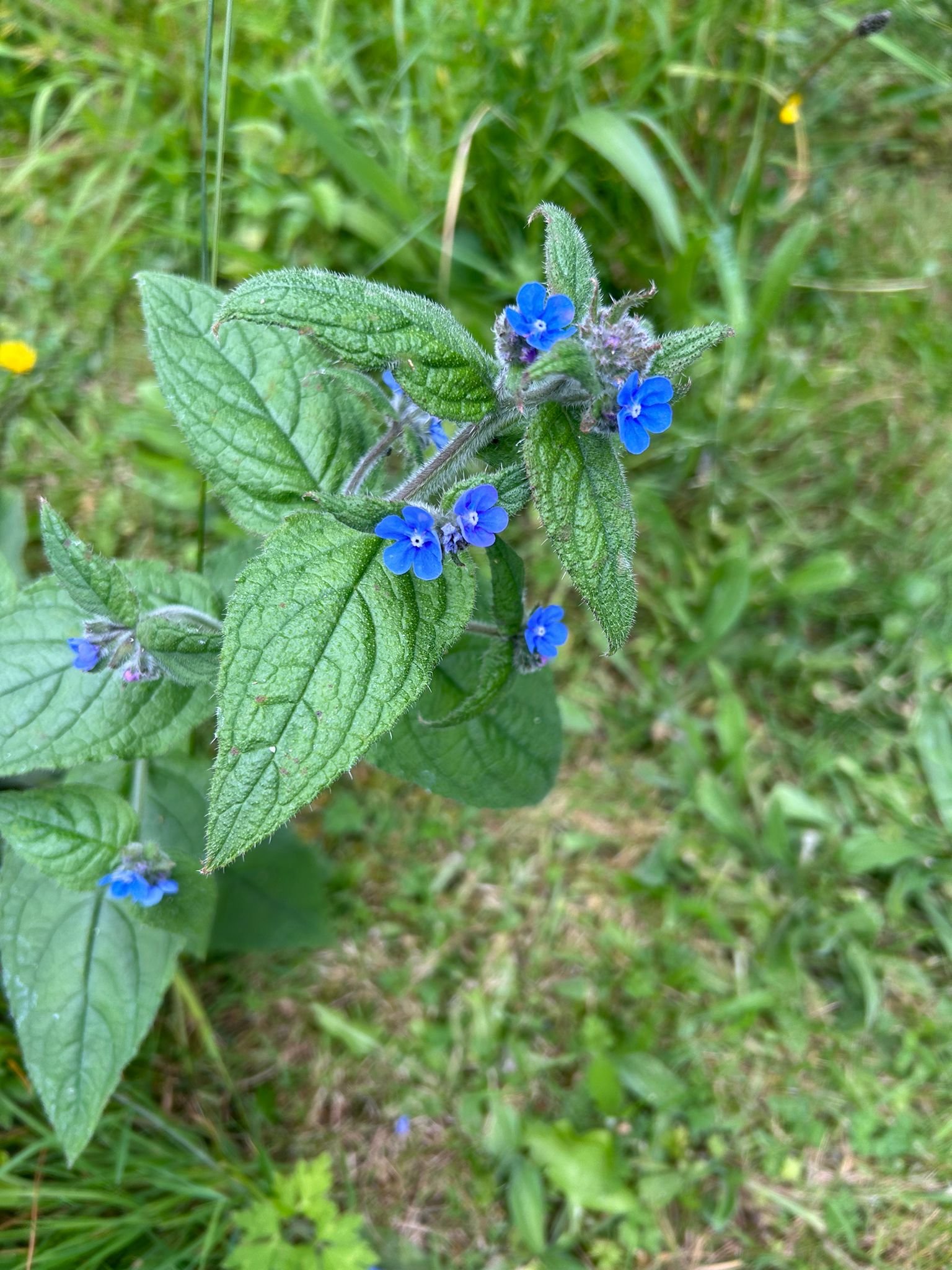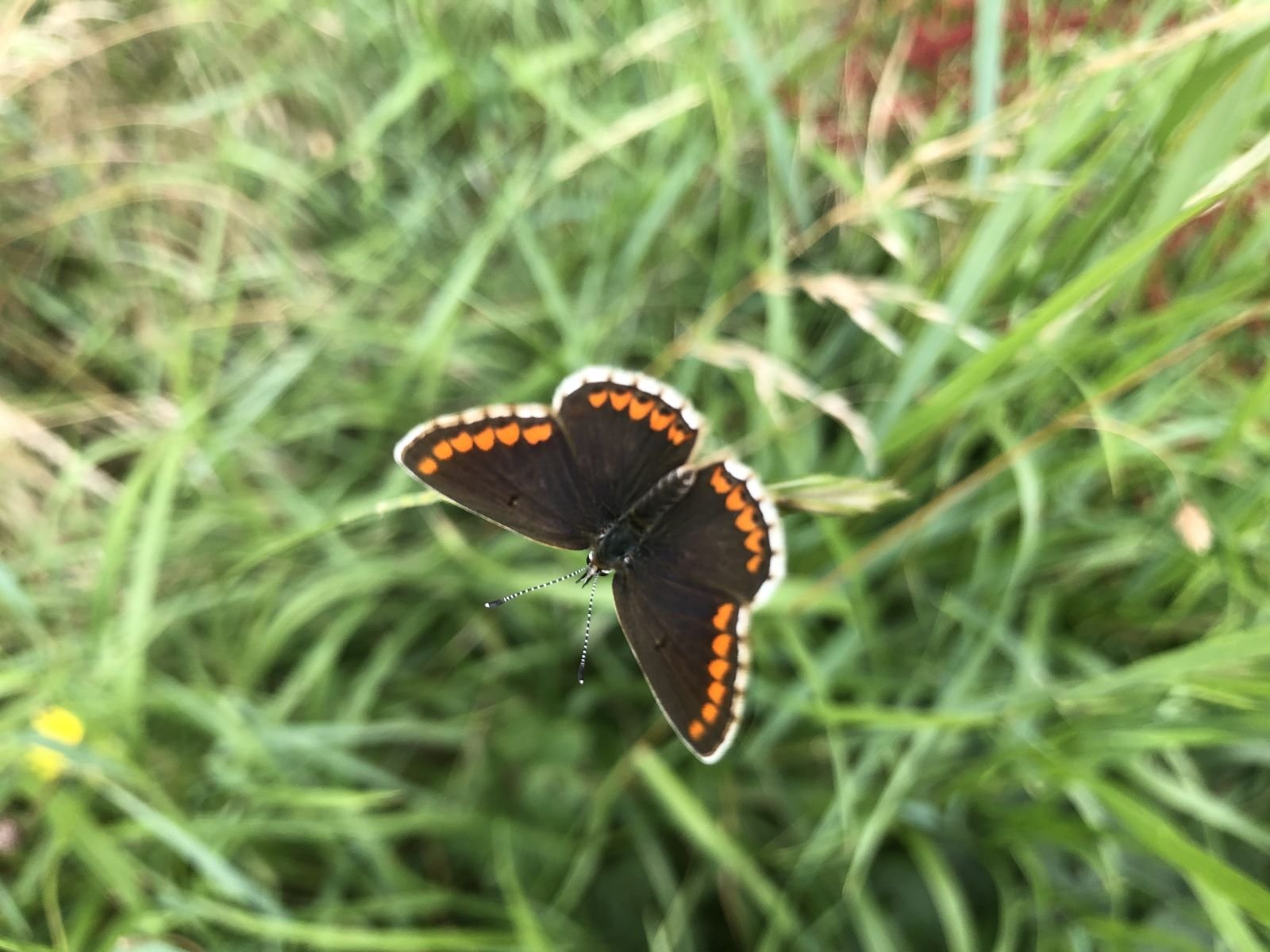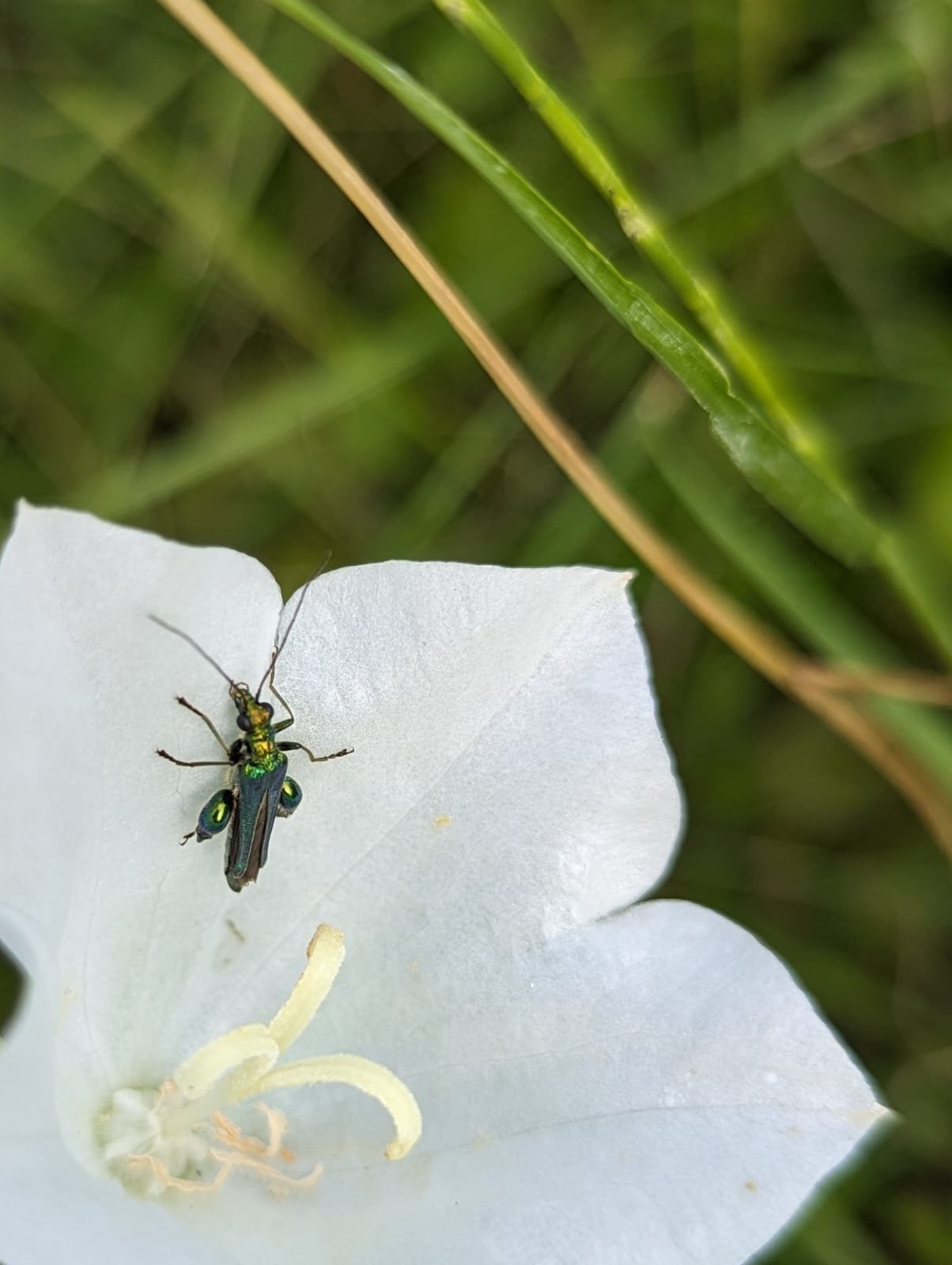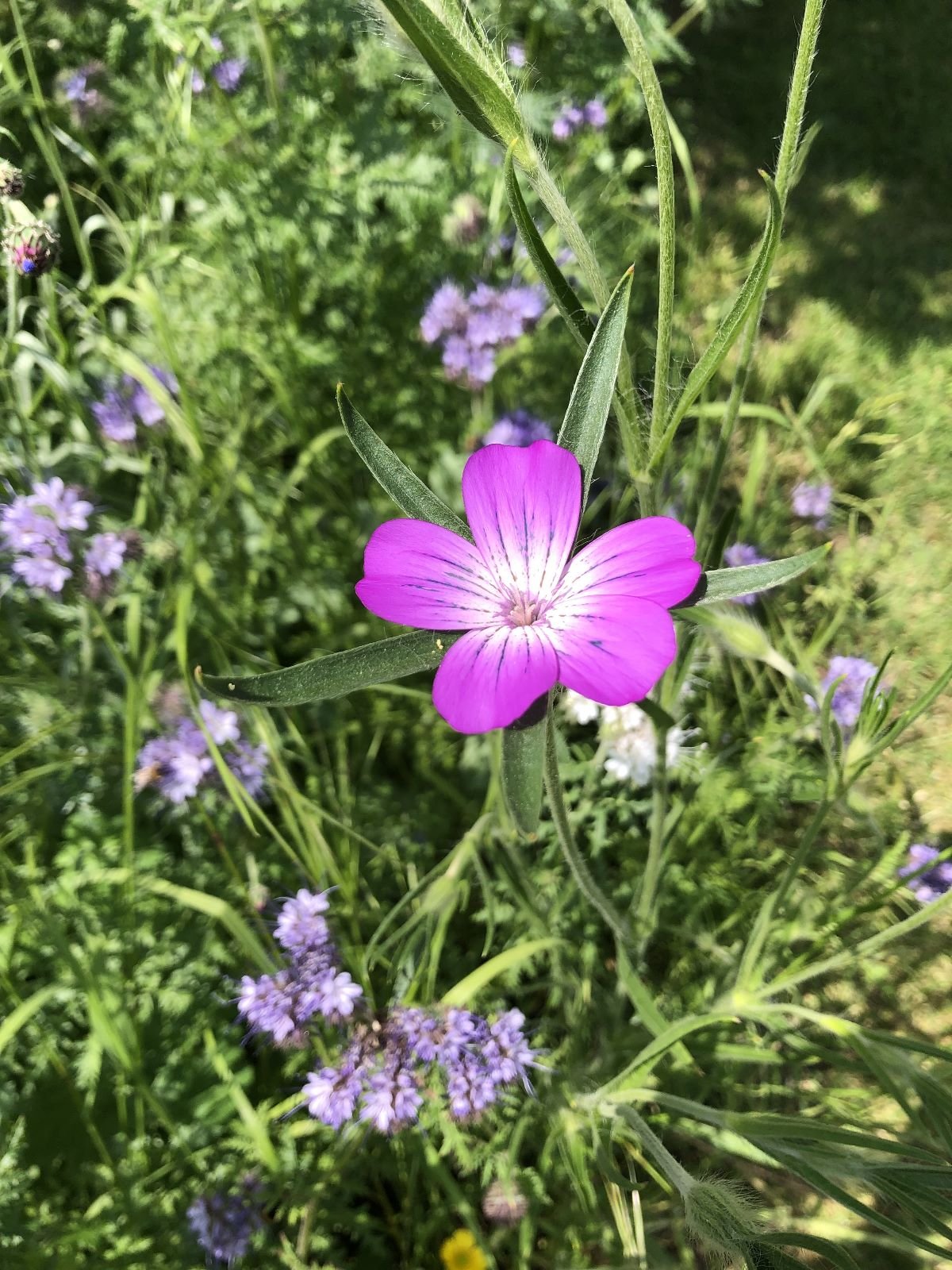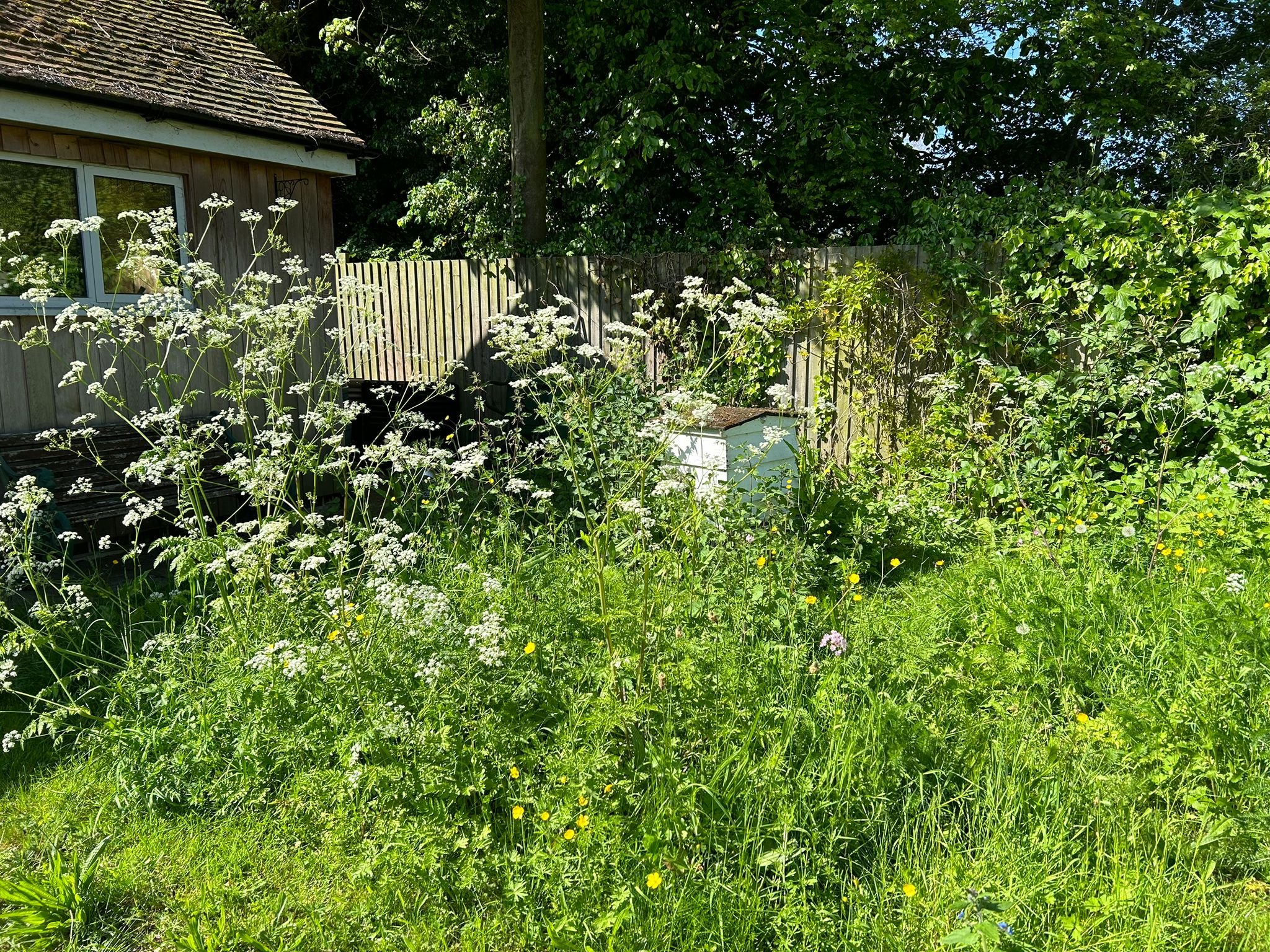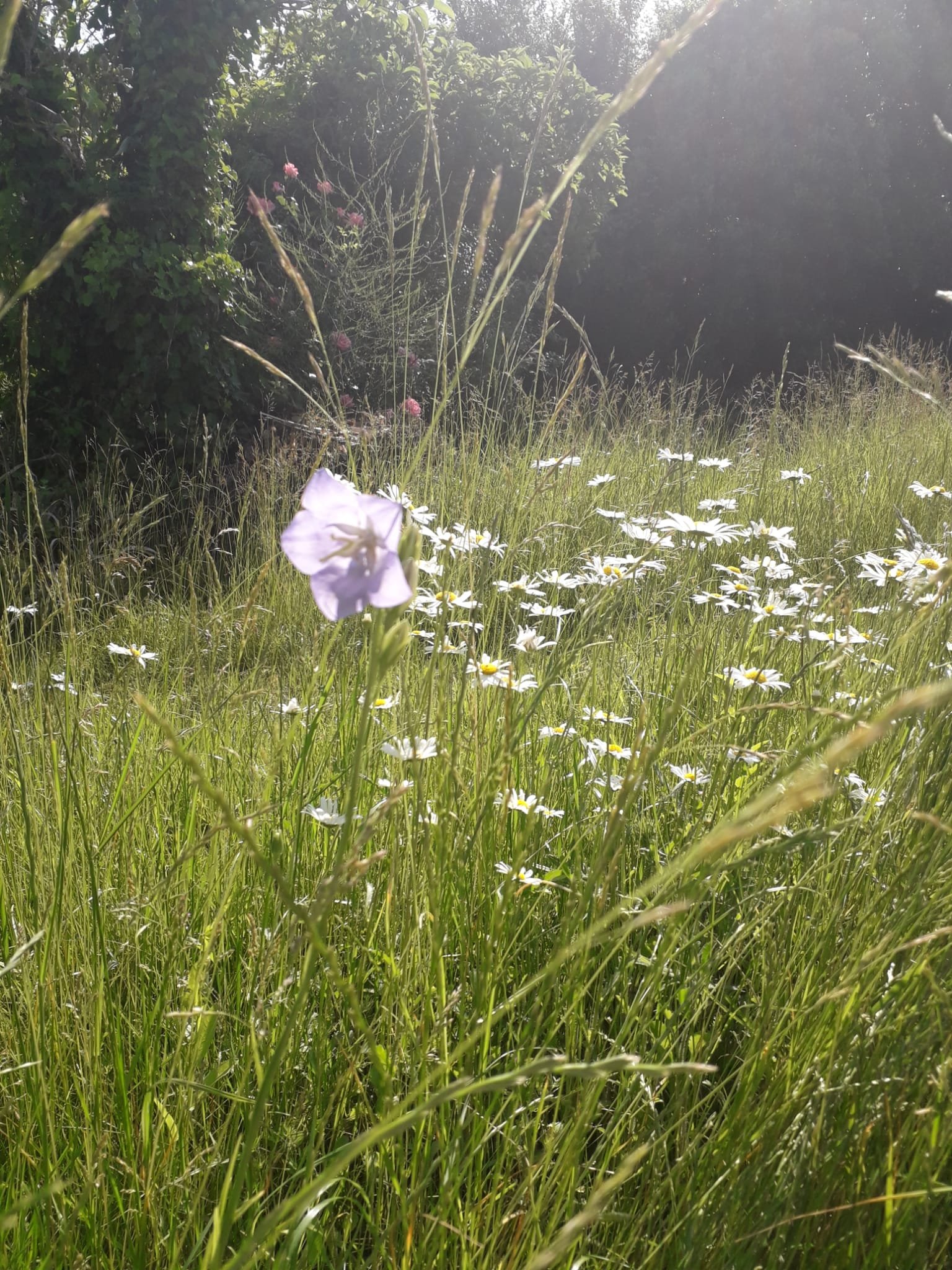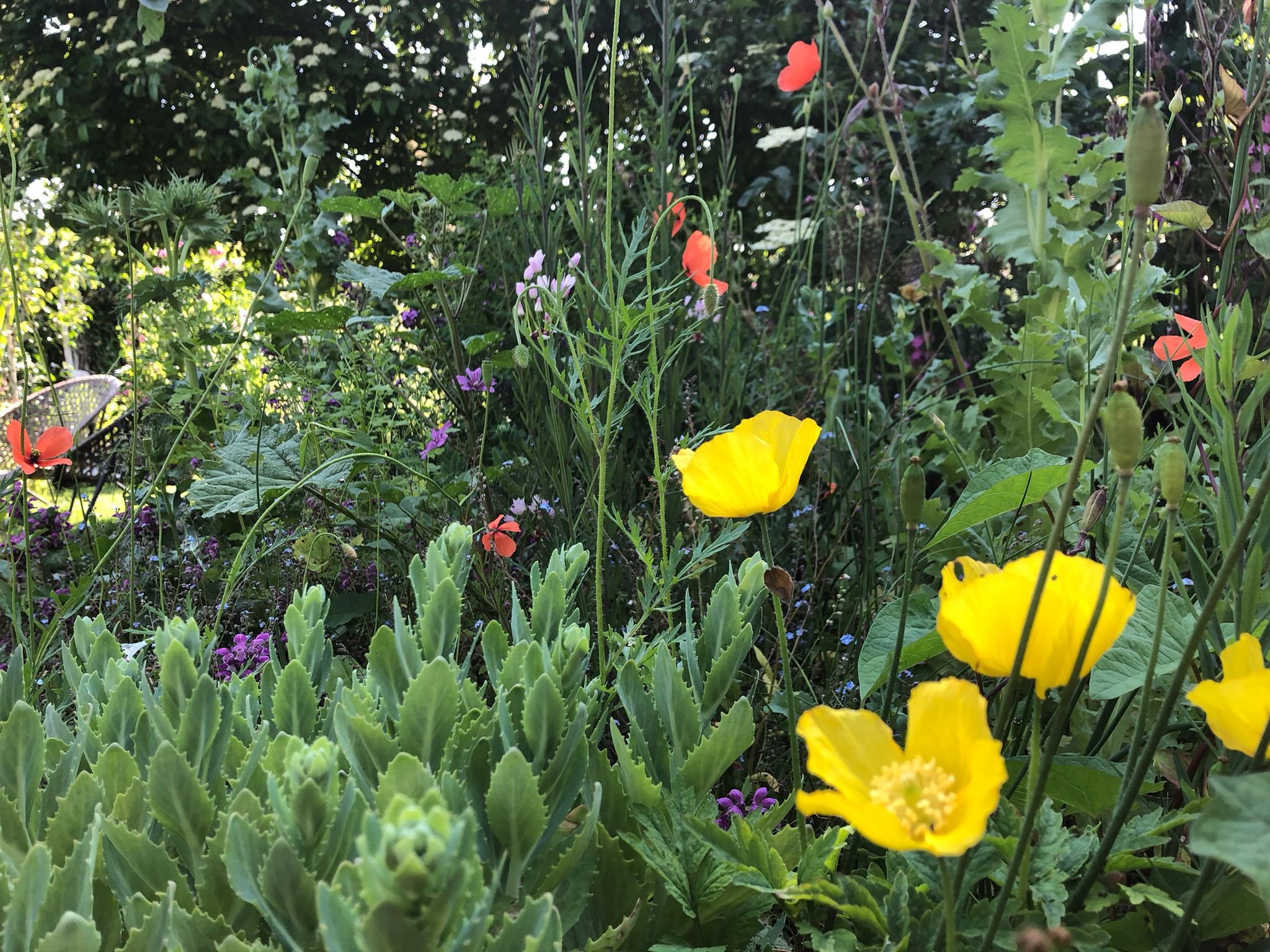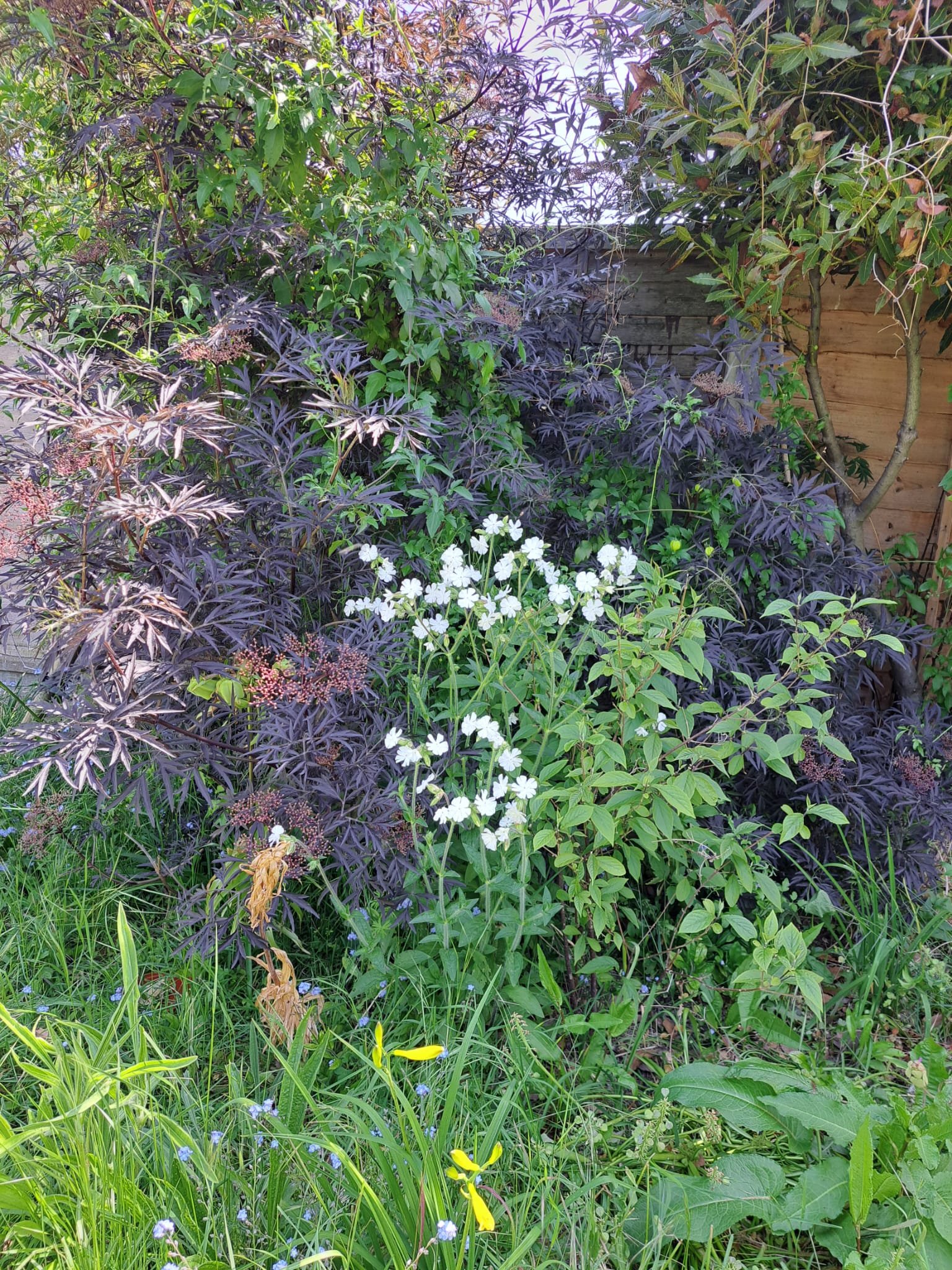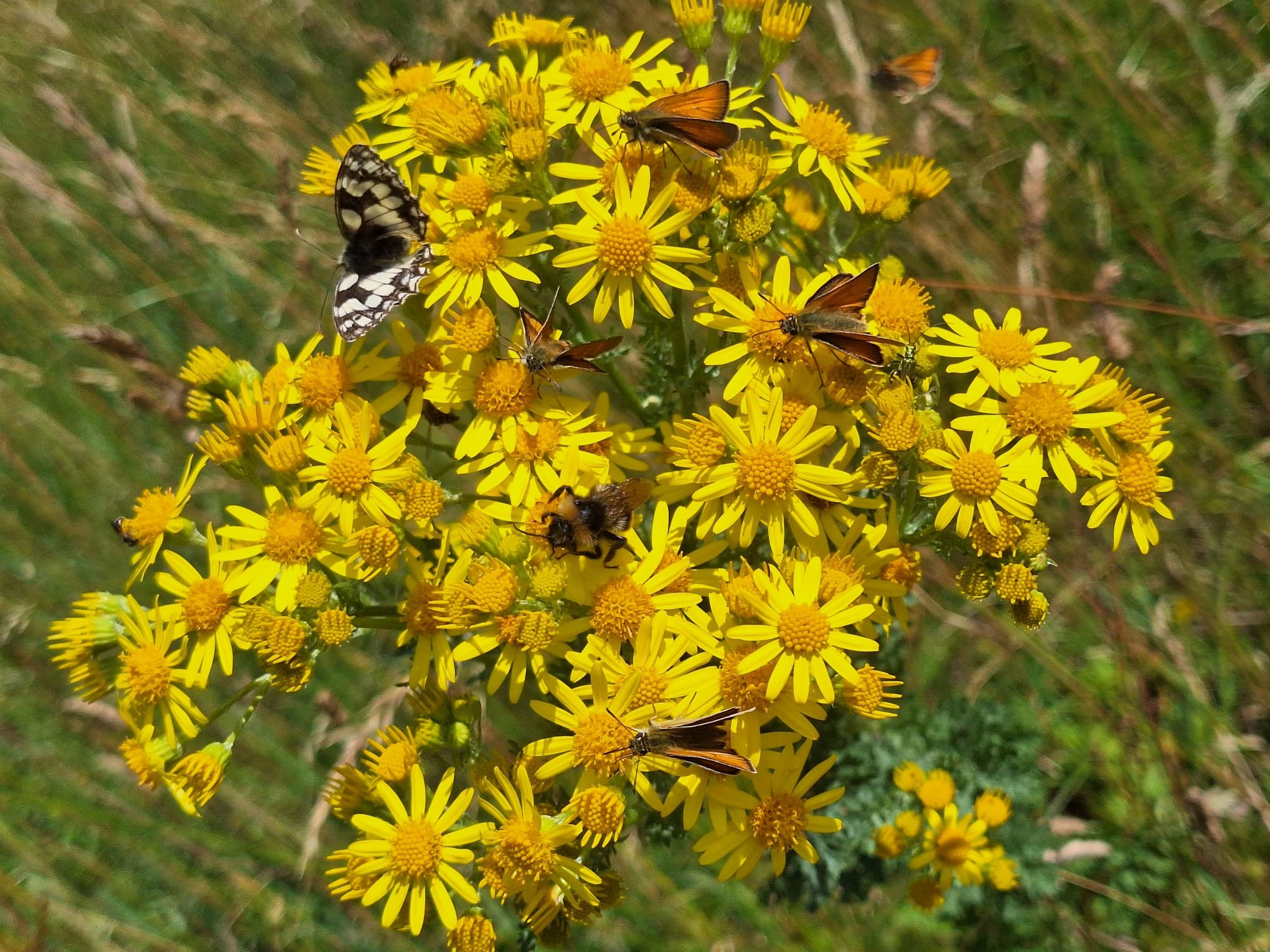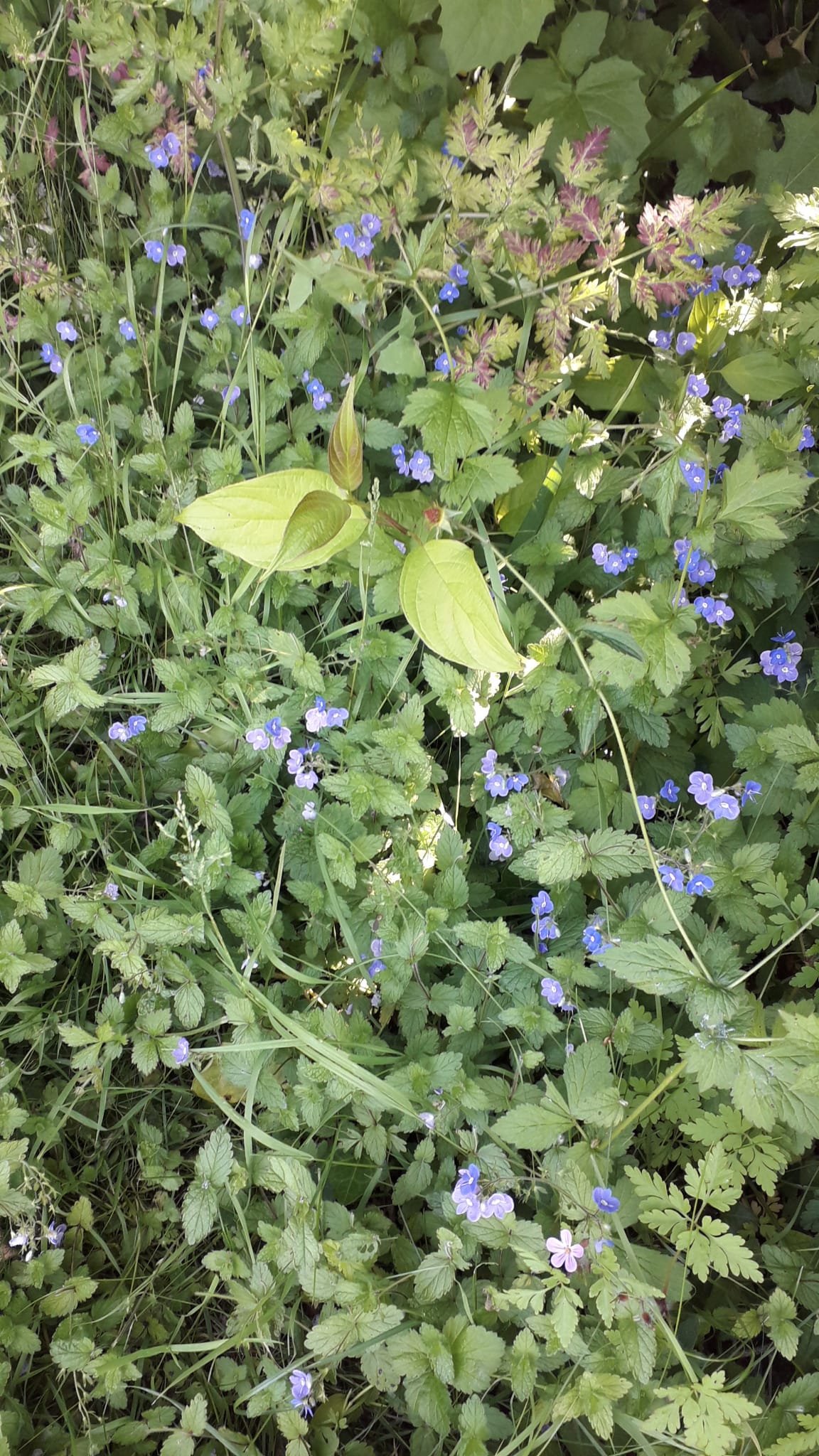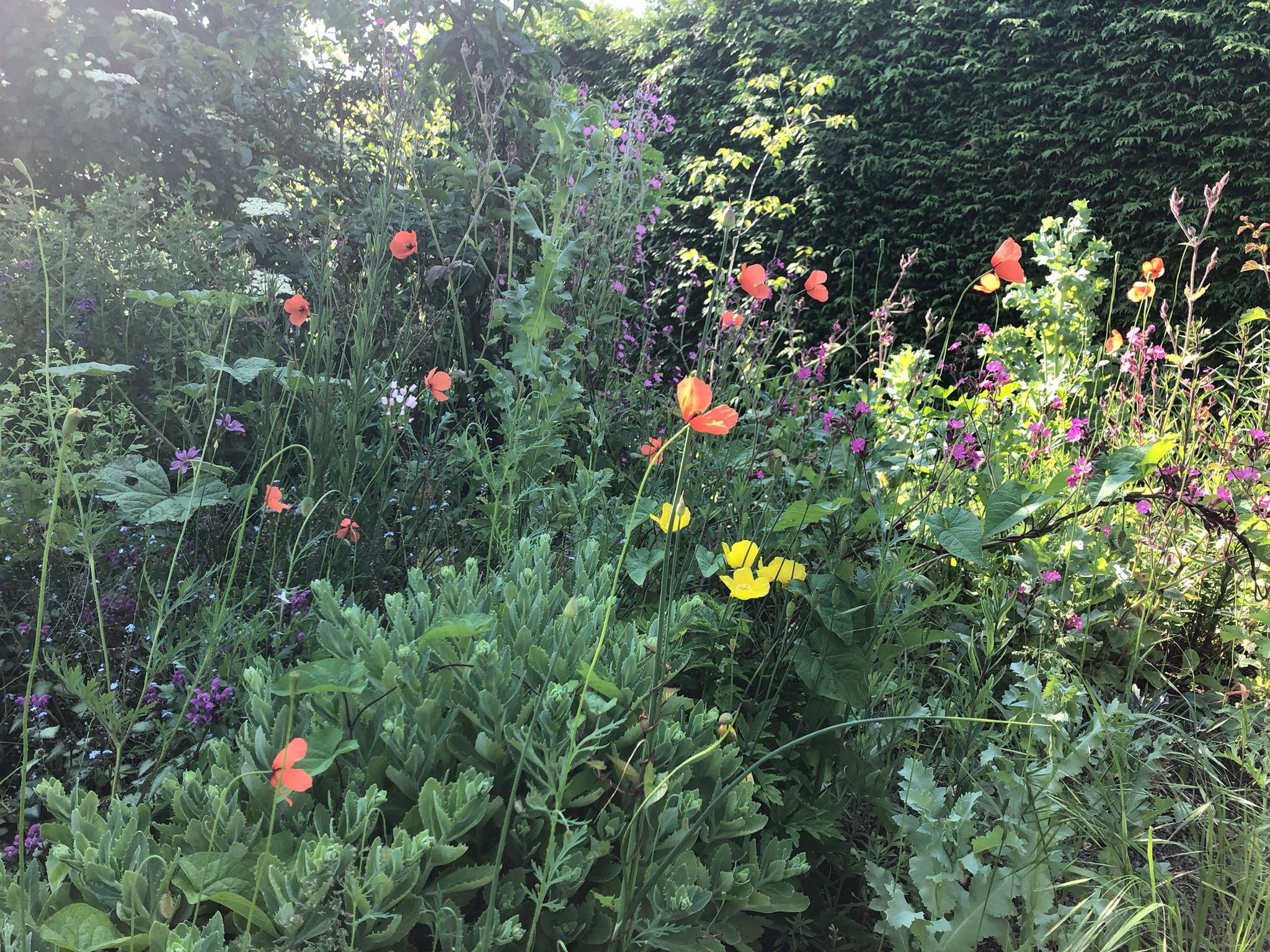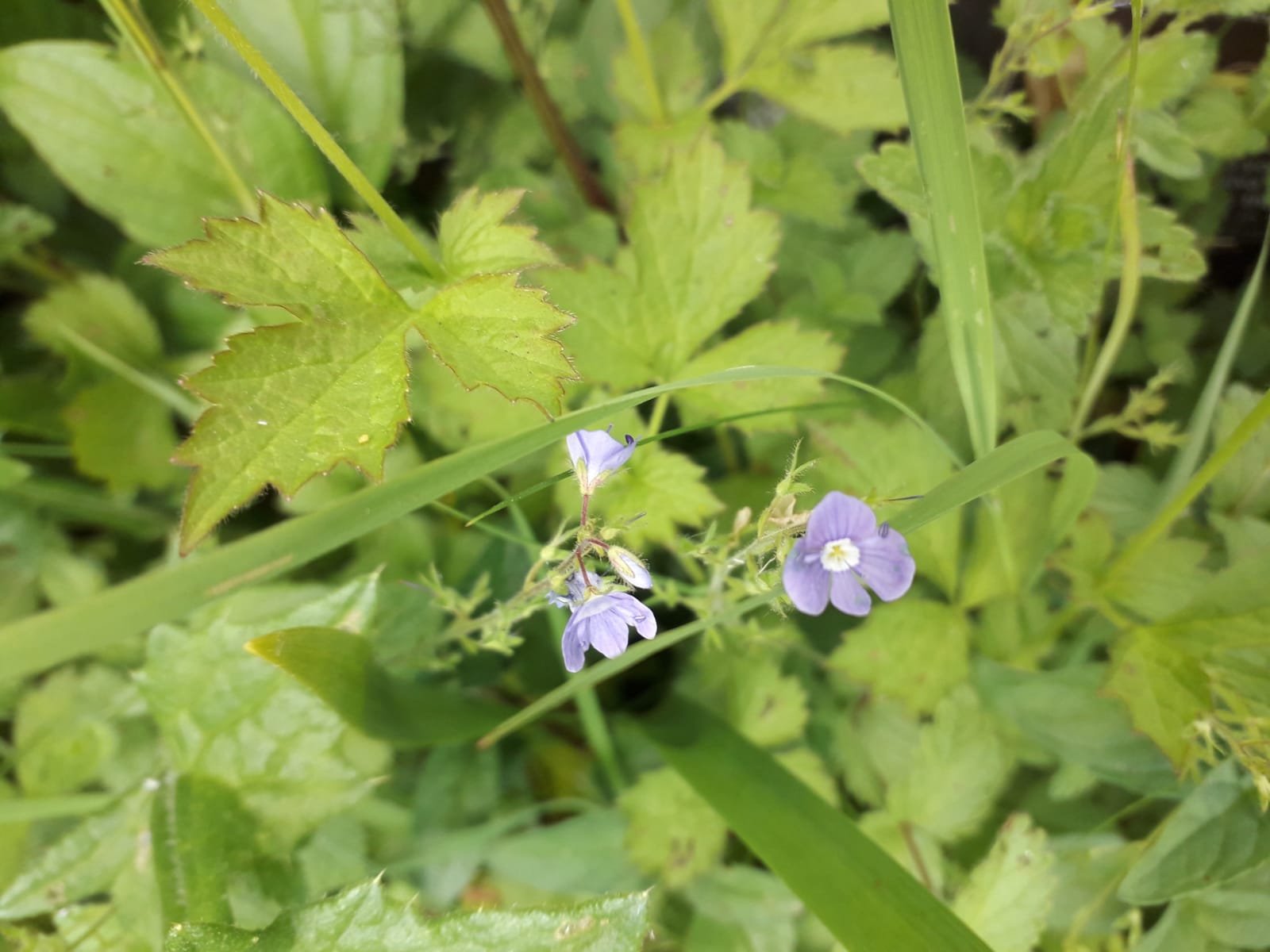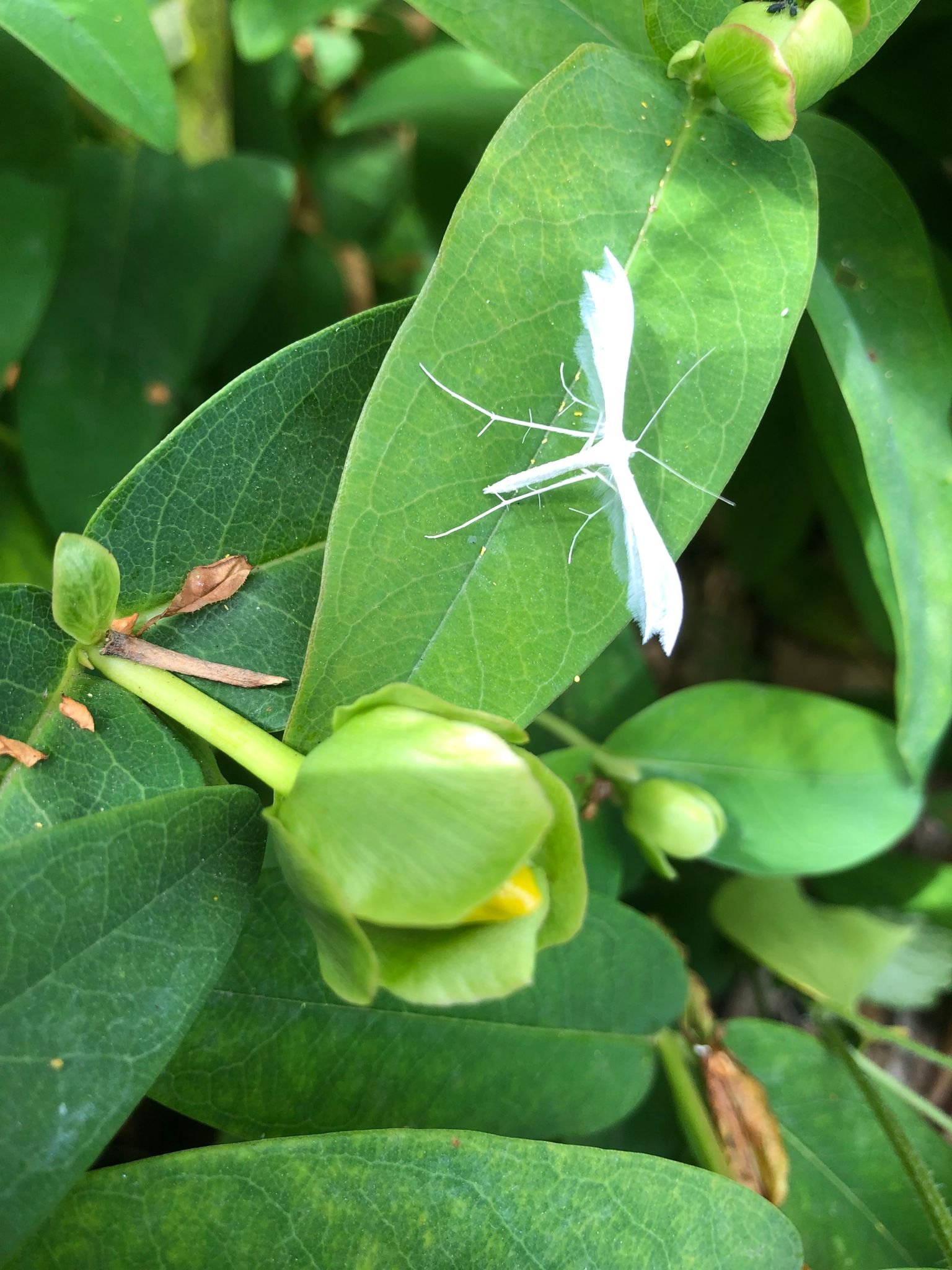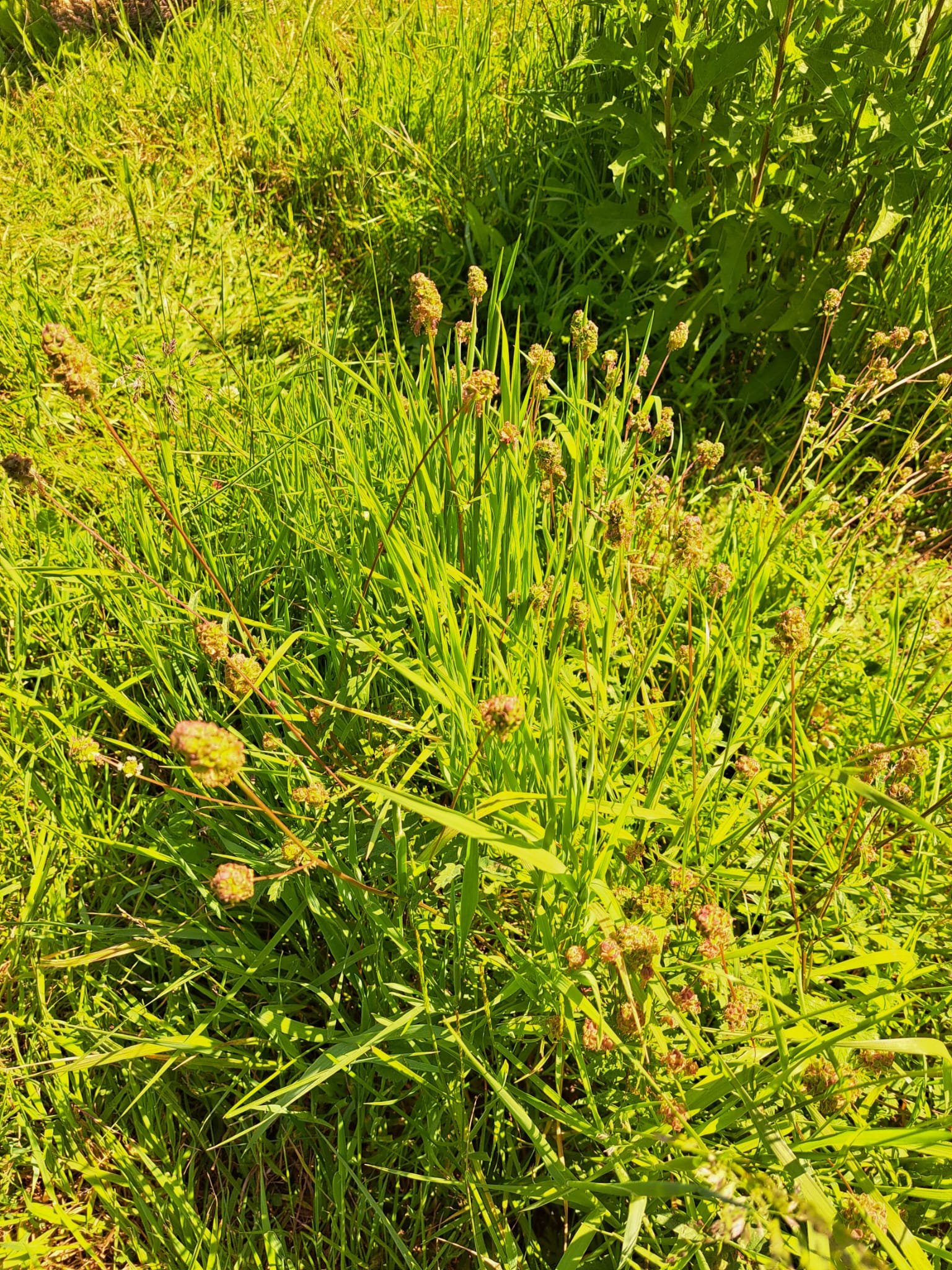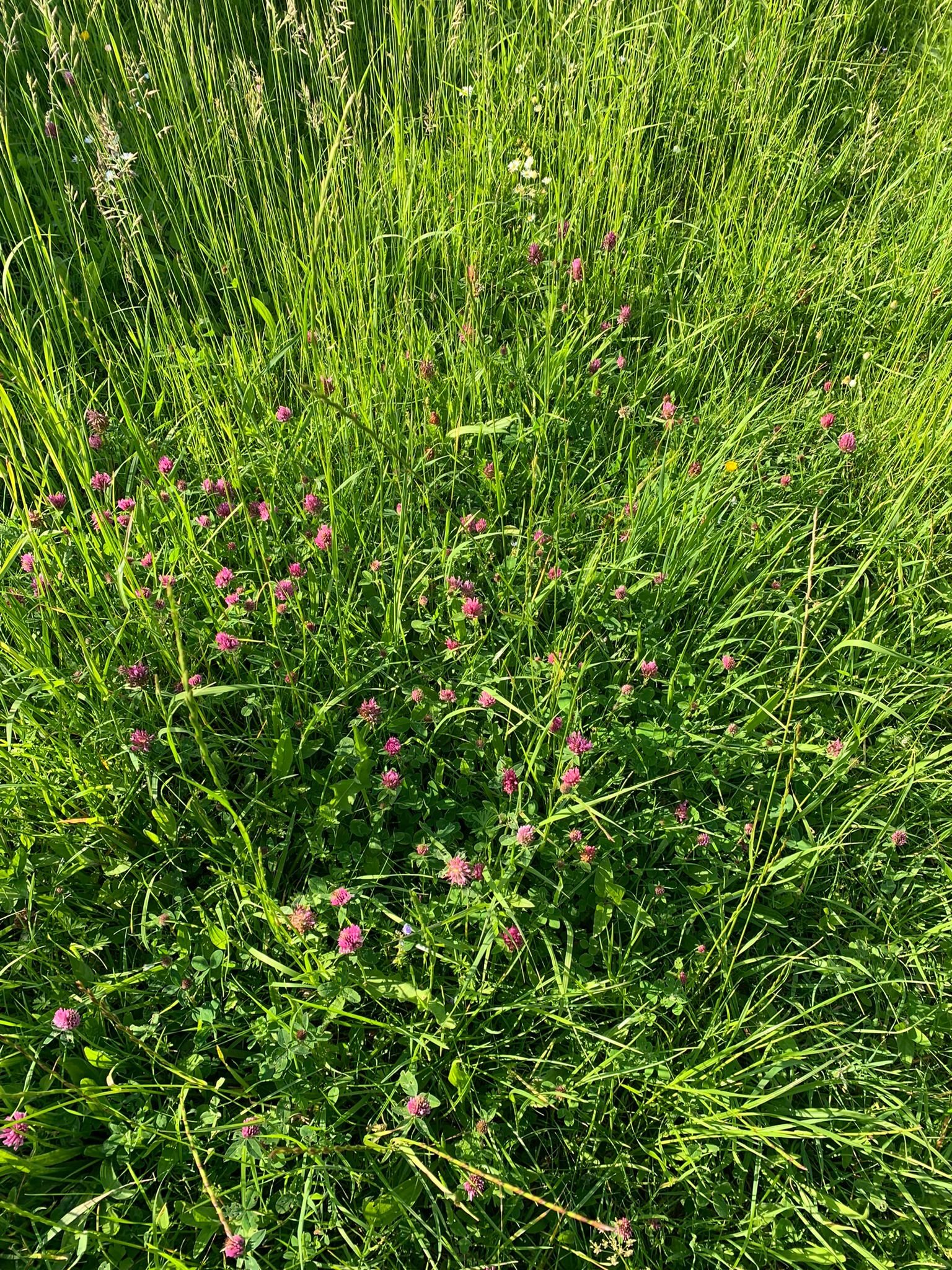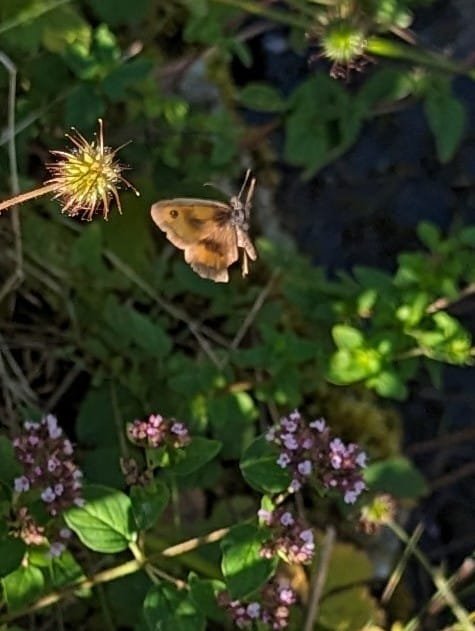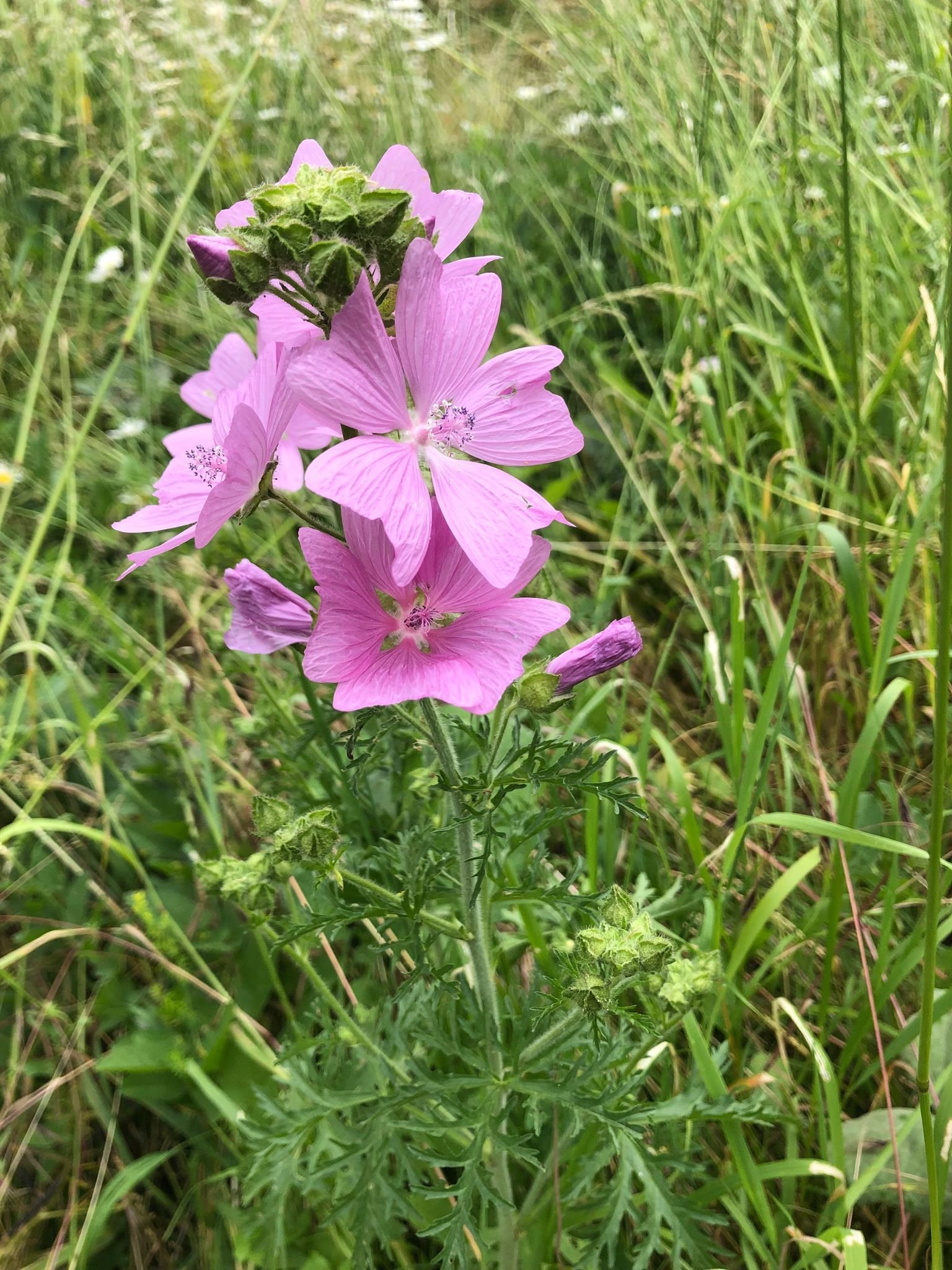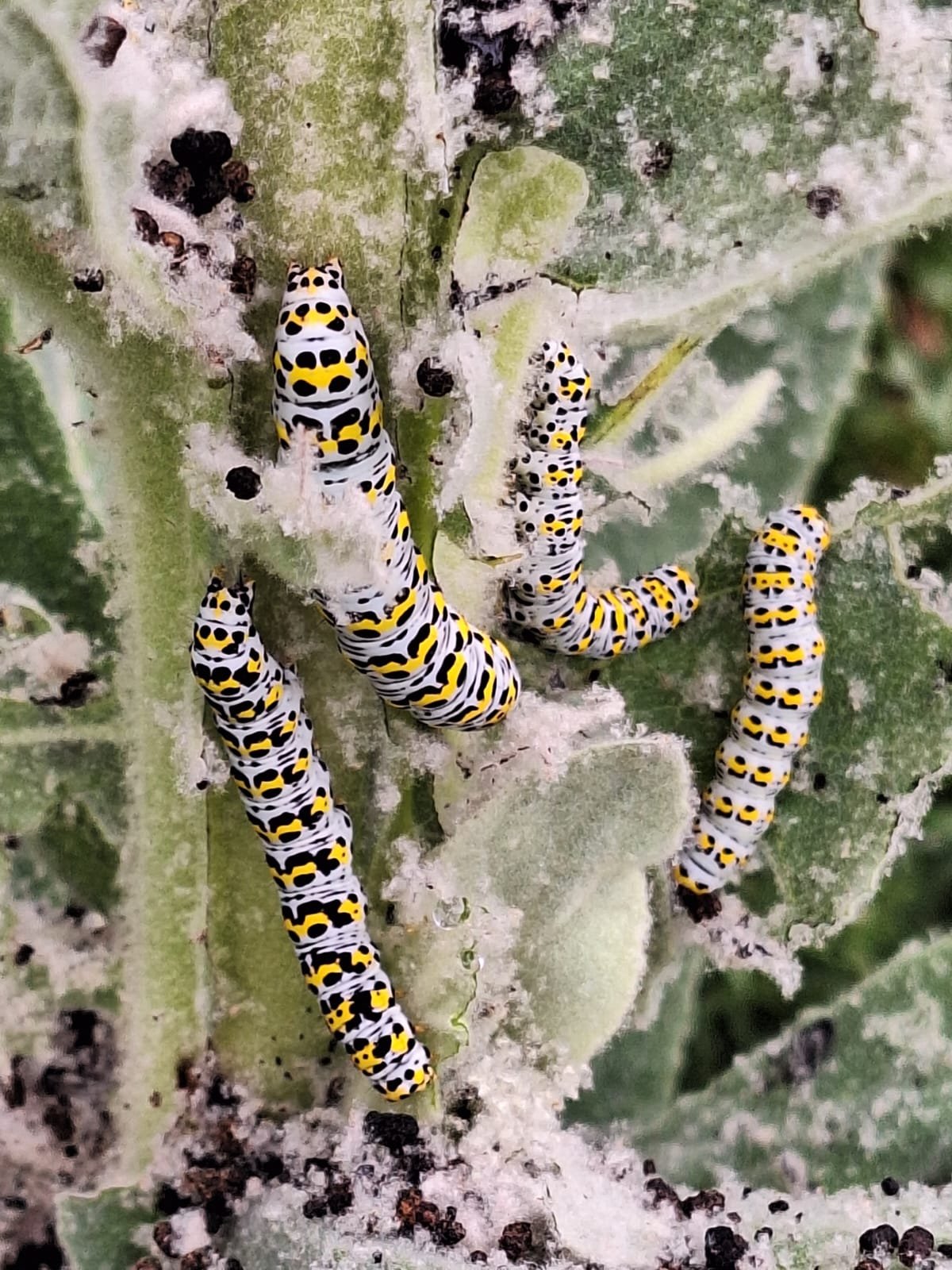This spring and summer, residents from Harlton and Haslingfield have taken part in the LET IT
GROW! project, which aims to increase biodiversity in our villages by creating a patchwork of wild
spaces where wildlife can thrive.
The “Let it Growers” allowed part of their garden to grow wild, stopping or reducing mowing over
the spring and summer months. We watched and waited, and then exchanged news and photos via
our WhatsApp group and email.
The results were fascinating. Wildflowers of all shapes, sizes and colours started to appear in our
gardens. People identified the plants using wildflower apps and books and let us know what they
found. Some were familiar, others were not, and many were beautiful. They added up to an
incredible 108 species, from buttercups to bee orchids. Some of the plant names, like cranesbill or
hawksbeard, conjured up a past world where people lived closer to nature; others, like self-heal and
feverfew, were a reminder that plants were often used for healing. The full list of species can be
seen below.
Participants also noticed that their gardens had more visits from bees, butterflies, hoverflies and
other insects. This was a very important part of the project. Since the 1970s the UK has lost nearly
97% of its flower-rich meadows, crucial habitats and sources of food for pollinators like bees, and
South Cambridgeshire is particularly poor in biodiversity. A wild patch with a variety of pollen- and
nectar-rich flowers offers much more to pollinators than a closely-trimmed lawn.
Many things need to happen on a much bigger scale to combat the biodiversity crisis and many of
these are not within our power. But letting a patch of your garden grow is a small and satisfying step
which many of us are able to take, and with over 20 million gardens in the UK, this kind of small-
scale action can have a significant effect on biodiversity, if enough people take part.
Let It Grow! will be running again next spring and we hope that more people will take part so that
the wild patchwork in our villages gets bigger every year. Why not consider joining in? If you’d like to
find out more, or share your photos and ideas, please contact us at HnHeco@gmail.com.
by Anne Clark, Harlton
SPECIES FOUND IN PARTICIPANT’S GARDENS for LET IT GROW 2023
Bindweed
Birdseye Speedwell
Bitter dock
Black Knapweed
Brown Knapweed
Buttercup (Bulbous)
Buttercup (Meadow)
Campanula
Campion (white)
Caper Spurge
Carman mugwort
Chamomile
Coltsfoot
Common Groundsel
Common Ivy
Common Mullein
Common Nipplewort
Common Spotted Orchid
Common Thistle
Cornflower
Corn Speedwell
Corncockle
Common Storksbill
Cow Parsley
Cowslip
Coxfoot grass
Creeping cinquefoil
Creeping Jenny
Cranesbill (Cut-leaved ) (geranium
dissectum)
Cranesbill (small flowered)
Daisy
Dandelion
Dock
Dog violet
Feverfew
Field Pansy
Field Poppy
Foxglove
Garlic Mustard
Germander Speedwell
Goosegrass
Green Alkanet
Ground Elder
Ivy (ground)
Hawksbeard
Hedge Mustard
Hedge Woundwort
Herb Robert
Himalayan Blackberry
Honesty
Ivy Leaved Toadflax
Kidney Vetch
Knotted Hedge Parsley
Lady’s bedstraw
Lamium
Lesser Hop Clover / Lesser trefoil
Lesser Knapweed
Lords and Ladies
Love-in-a-mist
Musk Mallow
Mallow (Common)
Meadow grass
Michaelmas Daisy
Poppy (Field)
Poppy (Opium)
Poppy (Oriental)
Oxeye daisy
Phacelia
Primrose
Purple Dead Nettle
Purple Toadflax
Ragwort
Red bryony
Red campion
Red clover
Red fescue
Ribwort Plantain
Rosebay Willowherb
Rosy Garlic
Scabious
Scotch Thistle
Sea Mayweed
Self heal
Small Burnet
Small geranium (geranium pusillum)
Sorrell
Speedwell
Spiny Sowthistle
Spring vetch
Star of Bethlehem
Sticky Chickweed
Stinging Nettle
Violets
Valerian
Veronica Austriaca/ Broadleafed speedwell
White Clover
White Dead Nettle
Wild Oregano
Wood Avens
Yellow chamomile
Yarrow
Yellow Rattle

